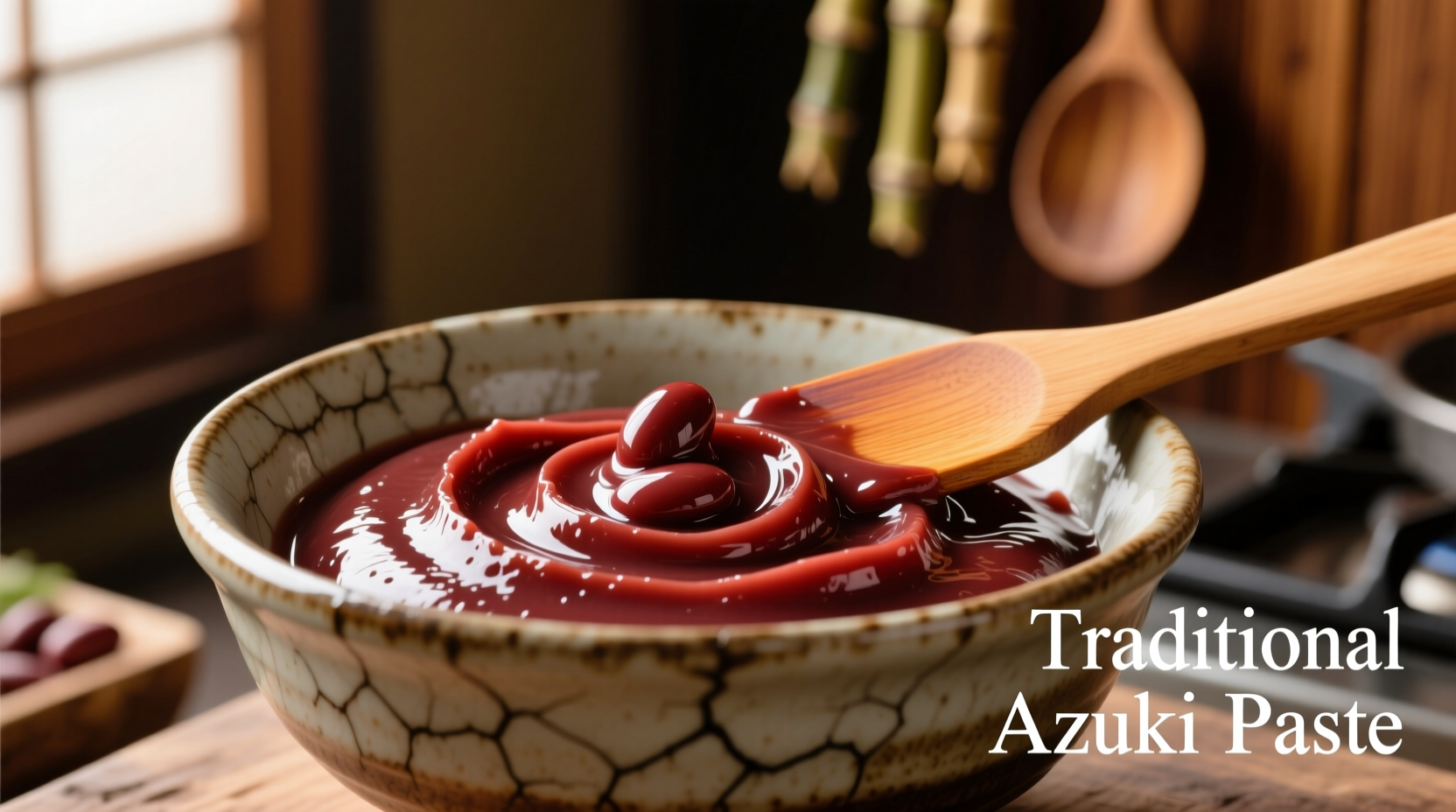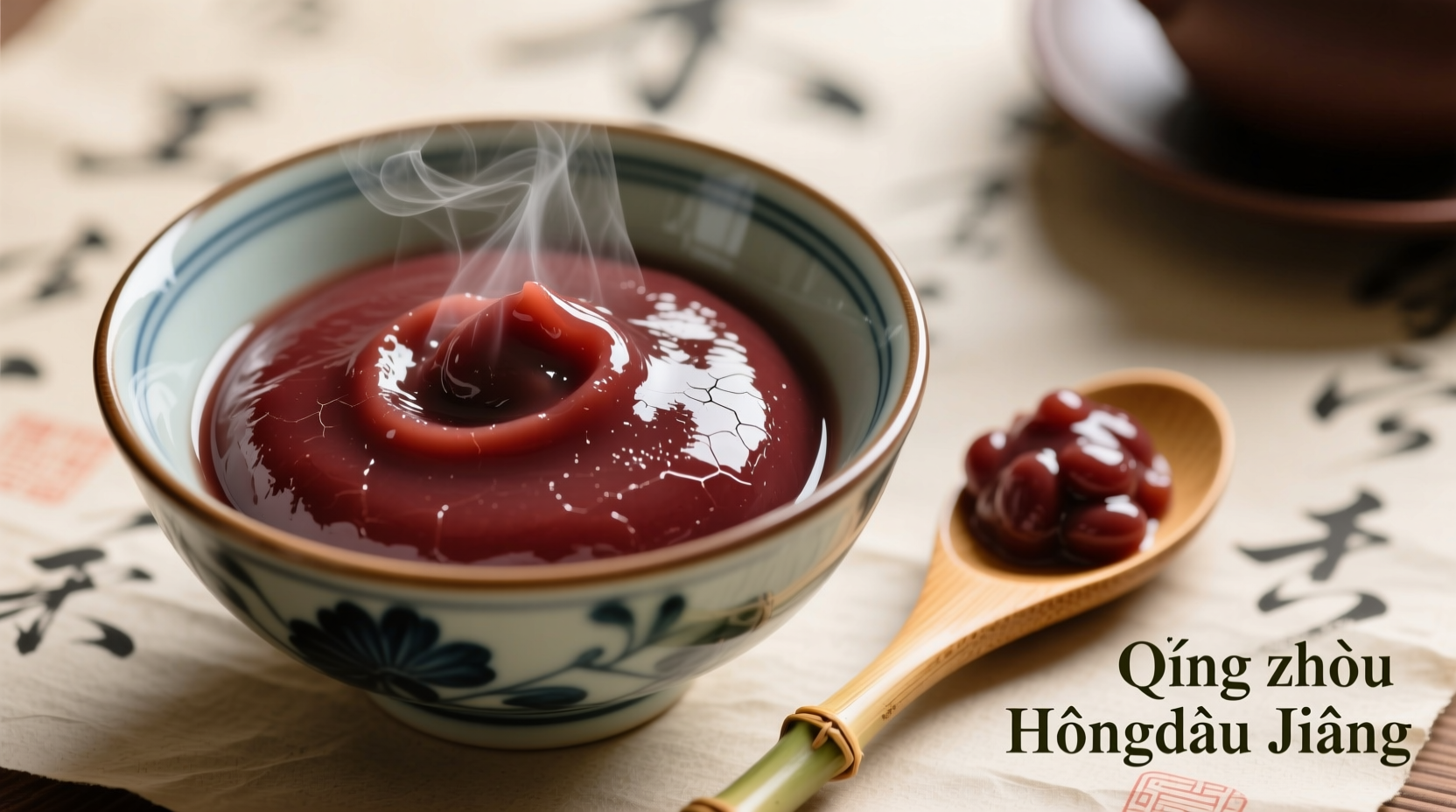When you first experience authentic red bean paste, you're encountering a culinary tradition that spans centuries across Asian cultures. Unlike the intensely sweet fillings common in Western desserts, red bean paste offers a refined balance that showcases the natural flavor of adzuki beans while providing just enough sweetness to satisfy without overwhelming your taste buds.
The Essential Flavor Profile of Red Bean Paste
Red bean paste, primarily made from adzuki beans, delivers a distinctive taste experience that surprises many first-time tasters. The flavor profile consists of several key elements that work in harmony:
- Sweetness level: Typically moderate (about 30-40% sugar content), significantly less sweet than Western jams or chocolate fillings
- Bean essence: A delicate, earthy bean flavor that's never harsh or "beany" when properly prepared
- Nutty undertones: Natural notes reminiscent of chestnuts or subtle almond flavors
- Texture: Smooth with a slight graininess that provides pleasant mouthfeel
- Aroma: Mildly sweet with warm, comforting notes
What makes red bean paste particularly interesting is how its flavor evolves as you eat it. The initial impression is mildly sweet, followed by the subtle earthiness of the beans, and finishing with a clean aftertaste that doesn't leave your mouth feeling coated or overly sugary—a common issue with many Western-style dessert fillings.
Regional Variations and Their Distinct Taste Characteristics
Not all red bean pastes taste the same. The preparation method and regional traditions significantly impact the final flavor profile. Here's how different versions compare:
| Regional Variation | Sweetness Level | Texture | Distinct Flavor Notes | Common Uses |
|---|---|---|---|---|
| Japanese (Anko) | Moderate (30-35%) | Smooth (Koshian) or Chunky (Tsubuan) | Delicate, subtle bean flavor with floral notes | Mochi, Dorayaki, Taiyaki |
| Chinese (Dònggāo) | Higher (40-50%) | Denser, more uniform | Richer, deeper bean flavor with caramel notes | Mooncakes, Baozi, Tangyuan |
| Korean (Patso) | Variable | Often retains some bean texture | More pronounced bean flavor with less sweetness | Patbingsu, Hotteok, Rice cakes |
The differences stem from preparation techniques that have evolved over centuries. Japanese anko typically uses a shorter cooking time with careful skimming of foam, preserving a lighter color and more delicate flavor. Chinese versions often include additional ingredients like lard or oil that create a richer mouthfeel and deeper flavor profile through the Maillard reaction during cooking.
How Red Bean Paste Evolved Across Asian Culinary Traditions
Understanding what red bean paste tastes like requires appreciating its historical journey through Asian cuisine:
- 7th-9th century: Adzuki beans introduced to Japan from China, initially used medicinally
- 12th century: First recorded use of sweetened red bean paste in Japanese confections (wagashi)
- 14th century: Chinese chefs begin incorporating lard into red bean paste, creating the richer version still used today
- 17th century: Development of specialized tools for mashing beans while preserving ideal texture
- 20th century: Industrial production methods emerge while traditional techniques are preserved in artisanal settings
This evolution explains why modern red bean paste has such a refined flavor—centuries of culinary refinement have optimized the balance between the natural bean flavor and added sweetness.

What to Expect When Tasting Authentic Red Bean Paste
Your first encounter with genuine red bean paste follows a specific sensory progression:
- Visual inspection: High-quality paste has a deep burgundy to mahogany color, never bright red
- Aroma: A mild, comforting scent with subtle sweetness—never artificial or overpowering
- Initial taste: Gentle sweetness that doesn't assault your palate
- Middle palate: The delicate earthiness of the beans emerges, balanced by the sweetness
- Mouthfeel: Smooth with a slight graininess that provides textural interest
- Finish: Clean aftertaste without the cloying residue common in overly sweet Western desserts
Temperature significantly affects the tasting experience. When served warm (as in many traditional applications), the sweetness becomes more pronounced and the texture more yielding. Chilled red bean paste (common in Korean patbingsu) has a firmer texture with more restrained sweetness, allowing the bean flavor to shine through more clearly.
Practical Guidance for First-Time Tasters
If you're new to red bean paste, these practical tips will help you appreciate its unique flavor profile:
- Start with traditional applications: Try it in mochi or dorayaki rather than eating it plain—the supporting elements enhance the experience
- Temperature matters: Experience it both warm (in freshly made buns) and cold (in shaved ice desserts) to understand its versatility
- Watch for quality indicators: Authentic paste has a deep, natural color—not artificially bright red—and a smooth but not perfectly uniform texture
- Consider pairings: Match with green tea, which complements rather than competes with the subtle flavors
- Adjust expectations: Remember this isn't meant to be as sweet as Western dessert fillings—the restraint is intentional
Many Western palates initially expect something more intensely sweet, but once you adjust your expectations to appreciate the subtlety, red bean paste reveals its sophisticated flavor profile. Food anthropologists note that Western consumers typically go through three stages when encountering red bean paste: initial surprise at the moderate sweetness, growing appreciation for the balance, and finally, a preference for its refined quality over more cloying sweet fillings.
How Red Bean Paste Functions in Culinary Context
Understanding what red bean paste tastes like requires knowing how it functions within Asian culinary traditions. Unlike Western dessert fillings that often dominate a dish, red bean paste plays a supporting role:
- Balance in sweet dishes: Provides sweetness without overwhelming other elements
- Texture contrast: Creates interesting mouthfeel against chewy mochi or flaky pastry
- Flavor bridge: Works with both delicate flavors (like matcha) and stronger ones (like black sesame)
- Cultural significance: The moderate sweetness reflects traditional Asian approaches to dessert—meant to be enjoyed in small portions as a complement to tea
Professional chefs note that red bean paste's versatility comes from its ability to serve as both a sweet element and a subtle savory component. When properly made, it contains just enough natural bean flavor to provide depth without venturing into "savory" territory—a delicate balance achieved through careful cooking and seasoning.
Common Misconceptions About Red Bean Paste Flavor
Several misconceptions often color people's expectations of red bean paste:
- "It should taste strongly of beans": Properly prepared red bean paste has only a subtle bean flavor—the cooking process transforms the raw bean taste
- "All red bean paste is extremely sweet": Authentic versions are significantly less sweet than Western dessert standards
- "The color should be bright red": Natural red bean paste ranges from deep burgundy to brownish-red—vibrant red often indicates artificial coloring
- "It's similar to kidney bean paste": Adzuki beans (used for red bean paste) have a completely different flavor profile than kidney beans
These misconceptions often lead to disappointment when expectations don't match reality. The key is approaching red bean paste with an understanding of its cultural context and culinary purpose—it's designed to be a refined, balanced element rather than a dominant sweet sensation.
How to Identify High-Quality Red Bean Paste
When exploring what red bean paste tastes like, quality makes a significant difference. Here's how to identify authentic, high-quality versions:
- Color: Deep burgundy to reddish-brown (never artificially bright red)
- Texture: Smooth with slight graininess (completely homogenous paste suggests additives)
- Aroma: Mild, pleasant scent without chemical or artificial notes
- Ingredients: Should list only adzuki beans, sugar, and possibly a small amount of oil or salt
- Mouthfeel: Melts smoothly without leaving a starchy or gritty residue
Culinary experts recommend tasting red bean paste alongside plain steamed adzuki beans to appreciate the transformation that occurs during the paste-making process. The cooking and sweetening process significantly mutes the raw bean flavor while enhancing the natural sweetness and nuttiness inherent in the beans.











 浙公网安备
33010002000092号
浙公网安备
33010002000092号 浙B2-20120091-4
浙B2-20120091-4